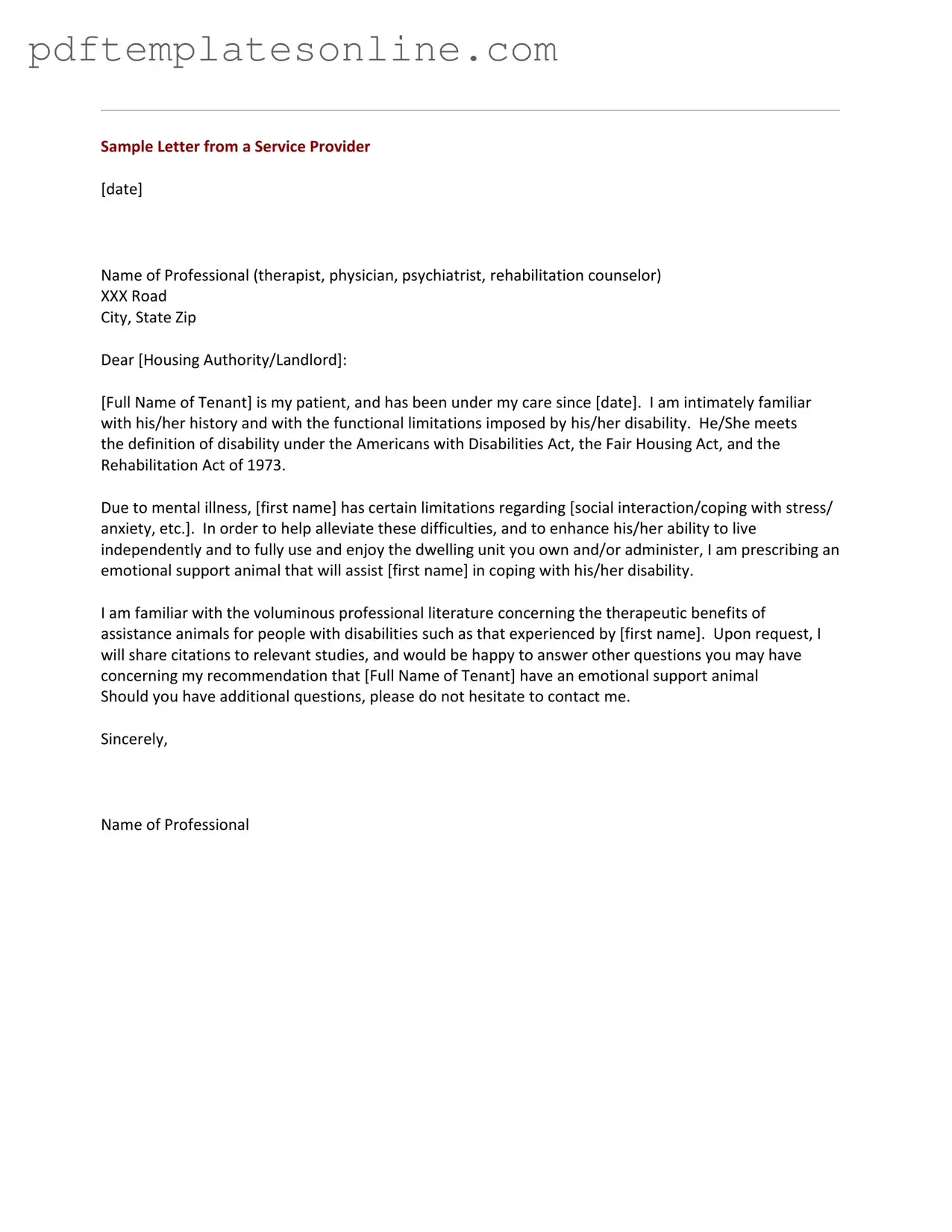Detailed Guide for Writing Emotional Support Animal Letter
Filling out the Emotional Support Animal Letter form is an important step for those seeking to have their emotional support animal recognized. This process requires careful attention to detail to ensure that all necessary information is provided accurately. Follow these steps to complete the form effectively.
- Begin by entering your full name in the designated space at the top of the form.
- Provide your current address, including city, state, and zip code.
- Fill in your phone number and email address for contact purposes.
- Indicate the type of emotional support animal you have, such as a dog or cat.
- Include your animal's name and any relevant identification number, if applicable.
- Describe your emotional or psychological condition briefly, ensuring to keep it clear and concise.
- Sign and date the form to validate your request.
- Review all the information you provided for accuracy before submitting the form.
Once you have completed the form, you can proceed with the next steps, which may include submitting it to your landlord or housing provider, depending on your situation. Make sure to keep a copy for your records.
